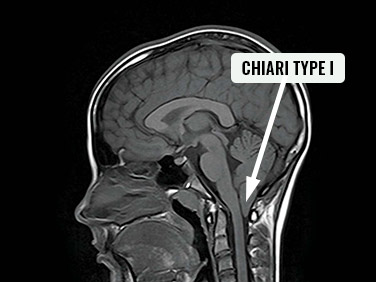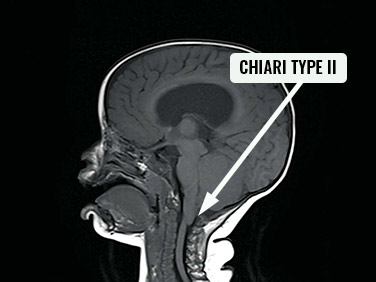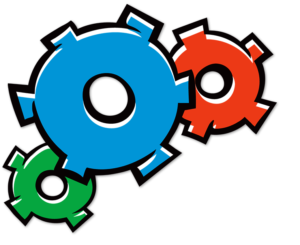Chiari Malformations
A Chiari malformation is a neuroanatomical condition that involves the area of the brain closest to the spinal cord. This part of the brain (the cerebellar tonsils, which are not the tonsils in the throat) descends into the neck area. The cerebellar tonsils normally reside within the cranial cavity. In children if the tonsils are more than five millimetres into the spinal canal then a radiologist may report that your child has a Chiari malformation. It is important to remember that the doctors will also look at the base of the skull to see if the base of the skull looks tight and if the bones are developed correctly.
When the cerebellar tonsils descend too low into the cervical spinal canal the physician will often make sure that there are no abnormalities in the brain that are pushing the tonsils down or any abnormalities in the spinal canal pulling the tonsils down.
Different types of Chiari malformations
Different malformations are numbered from one to four. The variations in terminology depend on if the tonsils are the only part of the brain to move into the cervical spinal canal. In some of the other subtypes other parts of the cerebellum (vermis), fourth ventricle, or brainstem migrate into a lower position. Excess water can collect within the spinal cord, or the bones at the craniocervical junction can be abnormal, resulting in a complex Chiari malformation.
- Type I: This is the most common type of Chiari malformation. Most of the patients are asymptomatic and the diagnosis is made based on MRI imaging.
- Type II: Type II involves the cerebellar tonsils, the brainstem, and part of the 4th ventricle that will descend into the spine. This type of Chiari is associated with children with spina bifida from birth and occasionally needs treatment.
What are the symptoms of Chiari malformation?
Most Chiari malformations are asymptomatic.
To find out if the Chiari malformation is symptomatic in your child, the physician will ask specific questions and examine for certain abnormalities.
- Chiari 1 symptoms
- Brainstem: children may have trouble with breathing or swallowing
- Cerebellum: children may have problems with balance and normal movement of the eyes
- Spinal cord: children may have trouble with weakness, numbness or pain in the arms or legs
- Headaches: children may have trouble with occipital headaches that are precipitated by coughing, sneezing or physical activity
- Scoliosis: children with scoliosis can sometimes have a Chiari malformation with an associated excess cerebrospinal fluid within the spinal cord, called syringomyelia
Surgical treatment
If your child needs surgery for his/her Chiari malformation, surgical techniques vary. If there is no problem with the top compartment of the brain or the spinal system, then the neurosurgeon will focus on the base of the skull and top of the spine. The principle of the surgery is to decompress the cranio-cervical junction to take any pressure off the back of the brain and allow normal cerebrospinal fluid dynamics to take place.


MRI of a Chiari type 1 and type 2
Reference: Donald M Hadley J Neurol Neurosurg Psychiatry 2002; “Chiari Malformation Fact Sheet,” NINDS. Publication date March 2013. NIH Publication No.13-4839.

